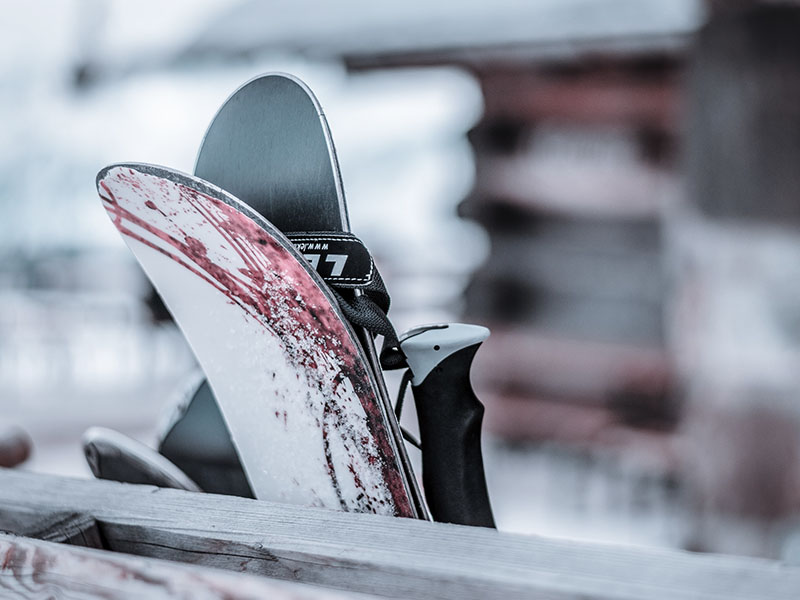It is the eternal debate waged to varying degrees of intensity at après-ski bars around the world.
Ultimately, you should know that all powder lovers respect both skiers and snowboarders. Both offer the chance to experience the pure rush of shredding the mountains, and that’s what it’s all about!
First Time at the Snow
The general wisdom is that the first three days are easier on skis than on a snowboard, as skiers are able to stand up and their legs are not locked in. Snowboarding will be a pain in the butt (literally), for the first three days as you struggle to move without falling onto your backside.
However, after that initial period, snowboarders tend to graduate to intermediate slopes a little quicker than those on skis and, in general, will be able to loosely navigate most of the mountain in a shorter period of time.
Progressing to an Advanced Level
Once you get past that intermediate phase, both skis and snowboards take seasons to master. After that point, it becomes more about athleticism and natural balance.
DIN settings
Another initial factor in choosing skis or snowboard may be discomfort with being locked into a snowboard without a release mechanism. Conversely, ski boots are locked into ski bindings and provide the ability to release from the skis in the event of a crash.
DIN settings refer to the tension required to release a skier from their bindings (standards for alpine ski bindings are set by the Deutsches Institut für Normung).
All skiers, but particularly beginners, should make sure that their DIN settings are set correctly so that they are able to release from their bindings when they crash to avoid injury.
Getting Around the Mountain
Flat areas are difficult for snowboarders as you will need to unstrap and skate along. Skiers have poles to help them move along flat areas and are not strapped in.
Snowboarders also tend to dislike moguls as they are annoying to move around on a single edge, whereas skiers often love the bumps.
Backcountry
Skis have made a big comeback in places where backcountry is popular, such as in Canada and New Zealand. Skis are more versatile for backcountry as you are more able to tackle rockier, narrow terrain and traverse where required.
Not that boarders cannot hit up the backcountry, but you generally have to be pretty good on a snowboard to tackle the chutes and rocks that skiers tackle, given the ability of skiers to simply walk out of an area if it becomes too treacherous.
In places like Canada, where the backcountry culture is very strong, it is not unusual to see 90% of kids on a school excursion on skis, all itching to get out into the backcountry.
Style
This debate rages on. On this point, you’re probably better off checking out a few ski and snowboard movies to make your own arguments. Tanner Hall (skis) and Travis Rice (snowboard) should start you off!
Terrain Park
It was snowboarders who originally pioneered terrain park riding and, among park rats, snowboarding is still more popular than skiing.
Snowboards tend to be more agile in the terrain park and easier to start pulling simpler tricks such as grabs. However, ski technology has slowly allowed skis to catch up in the park and now many skiers are able to boost higher than snowboarders in the half pipe and on other features.
Pure Speed
If it’s pure speed you’re after, then skis usually edge out snowboarders in a fall-line race.
Riding Powder
Both boards and skis rock in powder but both are difficult to master in powder. Snowboarding – it’s like you’re surfing the hill. Skiing – it’s like you’re riding clouds. Both will involve incredible powder face shots which is all that matters!
If Working the Whole Season Just Try Both!
If you are spending the entire season at the snow, why not try both skiing and snowboarding at some point? They require different skills and will provide for a new challenge if you get in a form slump on your preferred plank.






